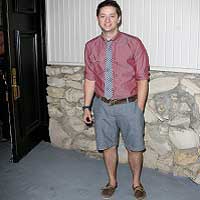Fabric Conditioner Market Set for USD 3.22 Billion Growth

Rising Potential in the Fabric Conditioner Market
The global fabric conditioner market is showing significant growth potential, with a projected increase of USD 3.22 billion anticipated in the coming years. This surge is fueled by the growing demand for concentrated fabric conditioners, reflecting a shift in consumer preferences towards more efficient laundry solutions. Industry experts predict that during this period, the market is likely to grow at a compound annual growth rate (CAGR) of approximately 4.43%. As evolving trends in the cleanliness and care of fabrics continue to influence purchasing decisions, stakeholders are keenly analyzing the competitive landscape.
Market Dynamics and Key Drivers
Innovative Product Formats Drive Interest
Fabric conditioners are diversifying, available in various forms such as capsules, sprays, bars, and crystals. For instance, eco-friendly organic fabric conditioners made from natural fibers are gaining traction. Products like P&G’s Downy Unstoppable and Unilever’s Comfort Liquid Capsules illustrate the rising trend toward concentrated formats that deliver potent cleaning and fragrance capabilities. Notably, P&G’s innovations including Downy Infusions exemplify how scent beads can elevate the fabric care experience with multi-layered fragrances.
Emerging Trends and Consumer Preferences
Trends indicate a growing focus on fragrances that cater to specific fabric needs, such as towels and bed linens. Consumers are increasingly gravitating towards long-lasting aromas, including sandalwood and vanilla, while showing greater interest in environmentally friendly formulations. Retail dynamics have evolved, with convenience stores and online retailers rapidly gaining market share, as they provide increased accessibility for consumers seeking fabric care solutions. Leading brands like Lenor and Henkel are at the forefront, continuously innovating to incorporate sustainability within their product offerings.
Challenges Facing the Market
Barriers to Adoption in Developing Regions
Despite positive momentum, the fabric conditioner market is encountering challenges, particularly in developing regions. The adoption rates are hindered by price sensitivity and the prevailing preference for traditional detergents. In many areas, consumers remain uninformed about the benefits and applications of advanced fabric conditioners. The cost associated with premium products, alongside entrenched habits of utilizing less expensive multi-purpose detergents, poses significant obstacles to growth.
Consumer Preferences Impacting Adoption
The home care landscape is shifting as consumers demand more efficient and fragrant fabric care products, tailored to sensitive skin. Traditional, low-foaming detergent markets are increasingly challenged by emerging alternatives such as organic and biodegradable options. The emphasis on longer-lasting fragrance and natural ingredients aligns with the expectations of modern consumers who approach laundry with environmental consciousness.
Market Segmentation and Insights
Distribution Channels
The market is segmented primarily into online and offline distribution channels, with both play essential roles in driving revenue growth. The online sector is particularly instrumental, driven by eCommerce trends that deliver convenience and a wider range of product choices directly to consumers.
Product Types
The fabric conditioner product spectrum also includes various forms such as liquid, dryer sheets, and bead formulations. Each product type caters to different consumer preferences and usage occasions, thus enriching the overall market landscape.
Forward-Thinking Innovations
The future of the fabric conditioner industry looks promising, as continued innovation leads to enhanced product offerings. For instance, advancements in technology such as solar-dry solutions propel efficiency in fabric care regimes, helping consumers save on water and energy. Additionally, a growing awareness around the environmental impacts of laundry products has ignited interest in natural and biodegradable alternatives while reshaping brand strategies.
Conclusion
In conclusion, the fabric conditioner market is primed for substantial growth, driven by changing consumer preferences, innovative products, and an increasing emphasis on sustainability. As key players like Church and Dwight Co. Inc., Colgate Palmolive Co., and Reckitt Benckiser Group implement AI and advanced technologies, they are likely to capture the evolving market landscape. The fabric care industry will undoubtedly continue to adapt to meet the demands of the environmentally conscious consumer.
Frequently Asked Questions
What is the projected growth for the fabric conditioner market?
The fabric conditioner market is projected to grow by USD 3.22 billion from 2023 to 2027.
What are the main drivers of market growth?
Key drivers include rising demand for concentrated products, innovations in fabric care formats, and sustainability trends.
Which companies are leading the fabric conditioner market?
Major players include Church and Dwight Co. Inc., Colgate Palmolive Co., P&G, Henkel, and Unilever among others.
What challenges does the market face?
The market faces challenges such as low adoption rates in developing regions and strong competition from traditional detergents.
What consumer trends are influencing fabric conditioner choices?
Consumers prefer longer-lasting fragrances, eco-friendly ingredients, and convenient product formats that cater to their fabric care needs.
About The Author
Contact Logan Wright privately here. Or send an email with ATTN: Logan Wright as the subject to contact@investorshangout.com.
About Investors Hangout
Investors Hangout is a leading online stock forum for financial discussion and learning, offering a wide range of free tools and resources. It draws in traders of all levels, who exchange market knowledge, investigate trading tactics, and keep an eye on industry developments in real time. Featuring financial articles, stock message boards, quotes, charts, company profiles, and live news updates. Through cooperative learning and a wealth of informational resources, it helps users from novices creating their first portfolios to experts honing their techniques. Join Investors Hangout today: https://investorshangout.com/
The content of this article is based on factual, publicly available information and does not represent legal, financial, or investment advice. Investors Hangout does not offer financial advice, and the author is not a licensed financial advisor. Consult a qualified advisor before making any financial or investment decisions based on this article. This article should not be considered advice to purchase, sell, or hold any securities or other investments. If any of the material provided here is inaccurate, please contact us for corrections.
